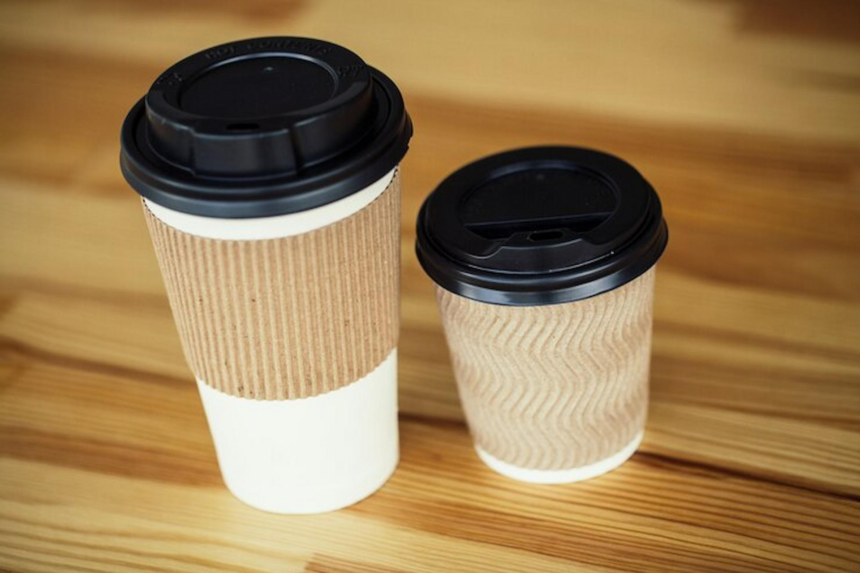Coffee culture has undergone a remarkable transformation over the decades, influenced by the brew and the vessels that carry it. Takeaway coffee cups, once merely functional containers, have become icons of contemporary culture, reflecting trends, environmental concerns, and shifting consumer preferences. This blog delves into the fascinating evolution of takeaway coffee cup designs, tracing their journey from humble beginnings to today’s diverse landscape. Join us as we explore the impact of these cups on coffee culture and the world beyond.
The Rise of Takeaway Coffee Culture
In the bustling streets of major cities worldwide, takeaway coffee cups have become ubiquitous symbols of modern life. This section explores how the rise of takeaway coffee culture paralleled urbanisation and the fast-paced lifestyles of the late 20th century. Initially, disposable cups were practical, designed for convenience rather than aesthetics. Over time, however, cafes and coffee chains began using these cups as a canvas for branding and artistic expression.
- The Functional Beginnings
Takeaway coffee cups first emerged as a solution for busy individuals who wanted their caffeine fix on the go. The early designs were simple: paper or foam cups with basic insulation properties. These cups prioritised functionality over style, aiming to keep beverages hot and spill-free during commutes or office breaks.
- A Canvas for Branding
As coffee consumption shifted from home kitchens to cafes and chains, takeaway cups became a branding opportunity. Coffee shops started printing their logos and slogans on cups, turning them into mobile advertisements. This trend promoted brand recognition and personalised the drinking experience for customers.
- The Advent of Customisation
With the rise of artisanal coffee culture came a demand for customisation. Customers began to prefer cups that reflected their tastes and values. Coffee chains responded by offering customisable options, allowing customers to choose cup designs that resonated with them. It marked a shift towards cups that were not just functional but also aesthetically pleasing and aligned with consumer identities.
- Influence of Coffee Chains
Major coffee chains played a pivotal role in standardising takeaway cup designs. Brands like Starbucks and Costa Coffee introduced iconic cup styles that became instantly recognisable worldwide. These designs enhanced brand visibility and set benchmarks for cup functionality and sustainability practices within the industry.
Design Trends and Innovations
Takeaway coffee cup designs have evolved beyond mere branding tools. This section examines the various design trends and innovations that have shaped modern takeaway cups’ aesthetics and functionality, catering to consumer preferences and environmental concerns.
- Eco-Friendly Materials
The coffee industry has been exploring eco-friendly alternatives to traditional paper and foam cups in response to growing environmental awareness. Biodegradable materials, such as cornstarch-based PLA (polylactic acid) and recycled paper, have gained popularity. These materials offer comparable insulation properties while significantly reducing environmental impact.
- Minimalist and Modern Designs
Modern consumers gravitate towards minimalist aesthetics and clean designs. Takeaway cups have followed suit, with many coffee chains opting for sleek, monochromatic designs that convey sophistication and simplicity. Such designs appeal to aesthetic sensibilities and align with contemporary design trends.
- Artistic Expressions
As coffee culture embraces creativity, takeaway cups have become canvases for artistic expression. Independent cafes and local roasters collaborate with artists to create limited-edition cup designs. These designs often feature unique illustrations, patterns, or cultural motifs, transforming coffee cups into collectable items that resonate with customers personally.
- Technological Integration
Advancements in technology have also influenced takeaway cup designs. Smart cups with temperature sensors or interactive displays are being developed to enhance the drinking experience. These high-tech cups maintain beverage temperature and provide information about the coffee’s origin, brewing process, and nutritional content, catering to tech-savvy consumers.
Sustainability and Ethical Considerations
In recent years, the sustainability of takeaway coffee cups has become a pressing issue. This section explores the industry’s efforts to address environmental concerns through innovative solutions and ethical practices, aiming to reduce waste and carbon footprint associated with disposable cups.
- Recycling and Compostability
Recognising the environmental impact of disposable cups, coffee chains and manufacturers are increasingly investing in recycling and composting initiatives. Many cups are now designed to be recyclable or compostable, encouraging responsible disposal practices among consumers. However, challenges remain in ensuring widespread recycling infrastructure and consumer education.
- Reusable Alternatives
Cafes are pushing reusable options to counter the overuse of throwaway cups. Reusable cups reduce waste and offer financial incentives, such as discounts on coffee purchases. Some establishments have implemented cup exchange programs or partnered with reusable cup services to encourage sustainable practices among their customers.
- Regulatory and Policy Initiatives
Governments and environmental organisations have also stepped in to regulate the use of disposable cups. Bans on single-use plastics and mandates for sustainable packaging have prompted coffee chains to adopt greener practices. These regulatory measures aim to mitigate environmental harm and promote a circular economy within the coffee industry.
- Continued Focus on Sustainability
Sustainability will remain a cornerstone of future takeaway cup designs. Innovations in recycling technologies, closed-loop systems, and carbon-neutral manufacturing processes will drive industry efforts towards achieving circularity. Consumers will likely demand transparency and accountability from coffee brands, encouraging continuous improvement in sustainable practices.
Conclusion
Takeaway coffee cups have evolved from functional containers to cultural artefacts that reflect our values and lifestyles. As explored in this blog post, these cups have shaped coffee culture and responded to environmental challenges and consumer expectations. Looking ahead, the future of takeaway coffee cups holds promise for innovation, sustainability, and continued cultural relevance. Whether through eco-friendly materials, personalised designs, or technological advancements, takeaway cups will continue to play a pivotal role in our coffee rituals and daily routines.



